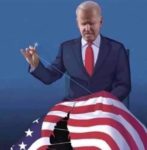Back in the day, an egg was an egg, a biscuit was a biscuit, and milk was milk–cow, goat, yak, what-have-you. Small communities had one or two options, tops, and were grateful to have those.
Then along came refrigeration, intercontinental highways, and global commerce. Perishable goods could be transported just about anywhere via railroad, eighteen-wheelers, ocean-going vessels and aircraft.
Over time, the mom and pop store found itself competing with Sears, J.C. Penney and larger grocery stores. And thus, the need for branding was born.
“Ask for it by name.”
“Accept no substitutes.”
“You can trust you car to the man who wears the star–the big white Texaco star!”
In today’s environment, branding yourself and/or your business is crucial to “standing out” against your competitors. (Cautionary Note: Don’t confuse a logo with branding. Your logo will become a part of your branding efforts, but it should be created after you’ve identified what your USP is going to be. (Your Unique Selling Proposition details the exclusive benefit you offer that none of your competitors can match.) The logo should reflect your USP in some way.
Without branding, you’re going to lose your shirt to a competitor who offers what you offer for less or to someone who has branded him- or herself.
You need to position yourself in your niche (whatever niche that is). You do this easily enough by filling in the following blanks (thank you to Copywriting for Dummies by Jonathan Kranz for the following template and examples):
[Name of your company, product or service] is the [defining quality] [category] for [audience description] consumers.
Examples: “KIA is the economy car for two and three-car households“; “Mercedes- Benz is the luxury car for status-conscious consumers“.
You don’t advertise your positioning statement. You write and commit it to memory simply to keep you on track as you develop your branding campaign and marketing materials.
Branding implies a special experience
As you develop your marketing copy, you should be working from a copy platform. Your copy platform will include some, but perhaps not all, of the following elements:
- Positioning statement
- Key benefits of your product or service
- Key features of your product or service
- Product characteristics/”personality”
- Target audience demographics and characteristics
- Rules and regulations (how to address your target audience; words to use and avoid, etc.)
Define the experiences you expect to deliver to your customers then build your brand around them
Choose the images, ideas and copy that reveal what your clients or customers can expect to receive when they do business with you.
Note: Don’t define or build a brand image that you can’t deliver on 100%
Define your business by setting limits on who you are and what you offer. Don’t try to be all things to all people. Find a niche to occupy and play on that note. Fearlessly pursue what distinguishes you from others in the same niche.
Develop a memorable tag line
Most tag lines are abbreviated, compelling versions of their company’s positioning statement or unique selling proposition.
“What happens in Vegas stays in Vegas.”
“It’s the real thing.”
“When is absolutely, positively has to be there overnight.”
“Weaving Words Into Wealth–YOURS! Turning Browsers Into Buyers.”







